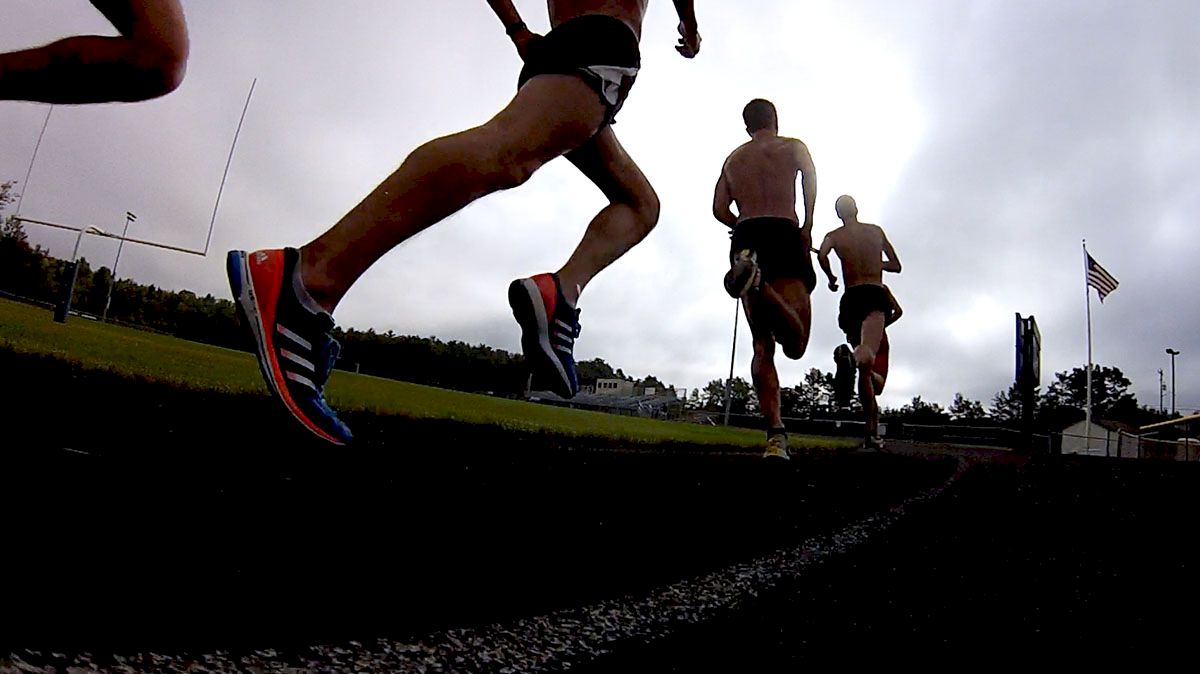Activation Level and Peak Performance
Activation Level and Peak Performance

Imagine that you are talking to your coach right before the biggest race of the season. What does he or she say? "Okay, this is it. Today its time to create your championship moment and make your dreams come true. Go show everyone why you have been working hard for the last six months and dominate this race." We think that as athletes we should be most fired up for when it matters most. We may even think that if we are not this pumped up that there is something wrong with us. So many athletes try to get as psyched as possible before the biggest of races. Soetimes when this happens we perform better than we have all season. Other times, we blow up. While understanding a good or bad performance in distance running (or any other discipline) can be difficult, performance may be moderated by activation level, or the degree that an athlete is "pumped up".
There is in fact an optimal amount of activation required for peak performance in sport, and this level is explained by the Inverted-U theory. Performance is best at a moderate level of arousal, but will worsen if arousal is too high or too low (Martens & Landers, 1970). But the amount of arousal or activation that is too high or too low for each individual varies. Research has suggested that activation needs to be at a moderate level for each individual for the best performances to occur. The pattern was confirmed in a study with basketball players, where the best performances were associated with moderate levels of state anxiety, but worse performances were related to elevated state anxiety (Sonstroem & Bernardo, 1982).
The key, therefore, is to learn how to read activation levels and understand how to change activation or arousal in order to reach the optimal individual level. High activation or arousal is what we think of as being "fired up" and is characterized by a higher than normal heart rate and a feeling of readiness to act. In order to reach a high level of activation athletes may use self-talk or can imagine great performances and success. Individuals can also use fast and intense music or an especially aggressive warmup to reach this state (Lauer, 2010). A loud and intense pep-talk would also probably do the trick. High activation states may be ideal for middle-distance races where it is important to be running hard from the gun and to react quickly to moves in the race. It will also be very easy to reach this state at events with a great deal of pressure or many fans, such as a national cross country meet or a large track invitational.
Low activation, however, is characterized by a feeling of relaxation and calmness. In order to lower activation and reach this state, individuals may listen to calming music and practice deep breathing. Some may also read a book or talk to friends about matters unrelated to competition. Athletes may also use a more gentle warmup and try to conserve energy before the start of a race. Many others also lay down before warming up for a race and imagine a calming place, such as a beach, in order to lower arousal or stay relaxed (Lauer, 2010). Reaching a state of lower activation may be more important in the distance races, such as a 10k or marathon, where relaxation through the first half of the race is important and sudden moves early in the race are rare. Individuals are likely to feel relaxed in smaller early season meets or practice and can reach this state easily, whereas it may be more difficult to maintain low levels of activation before a very big or important race. Finally, a coach's instructions can also impact arousal level. An intense speech will certainly elevate activation level, but a few relaxed words or minor instructions said in a calm voice will likely lower activation or arousal.
The best way to determine your optimal level of activation is to pay attention to how your level of arousal before action impacts the subsequent performance. Signs of a higher than ideal level of activation may include feeling jittery at the start line, going out too fast, or feeling drained and devoid of energy relatively early in the race. But if you struggle to really "get into the race" or do not feel very fired up or competitive during the race, your activation level may have been too low before the performance. If your activation level before performance is not ideal, use some of the above strategies to change it and your performance may improve for the better.
References
Lauer, L. (2010, February). Disciplined thinking, confident athlete: Thought Stopping and Positive Self-Talk. Presentation at the Youth Sport
Summit, Wingate, NC.
Martens, R. & Landers, D. M. (1970). Motor performance under stress: A test of the inverted-U hypothesis. Journal of Personality and Social
Psychology, 16, 29-37.
Sonstroem, R. J., & Bernardo, P. B. (1982). Intraindividual pregame state anxiety and basketball performance: A re-examination of the
inverted-U curve. Journal of Sport Psychology, 4, 235-245.